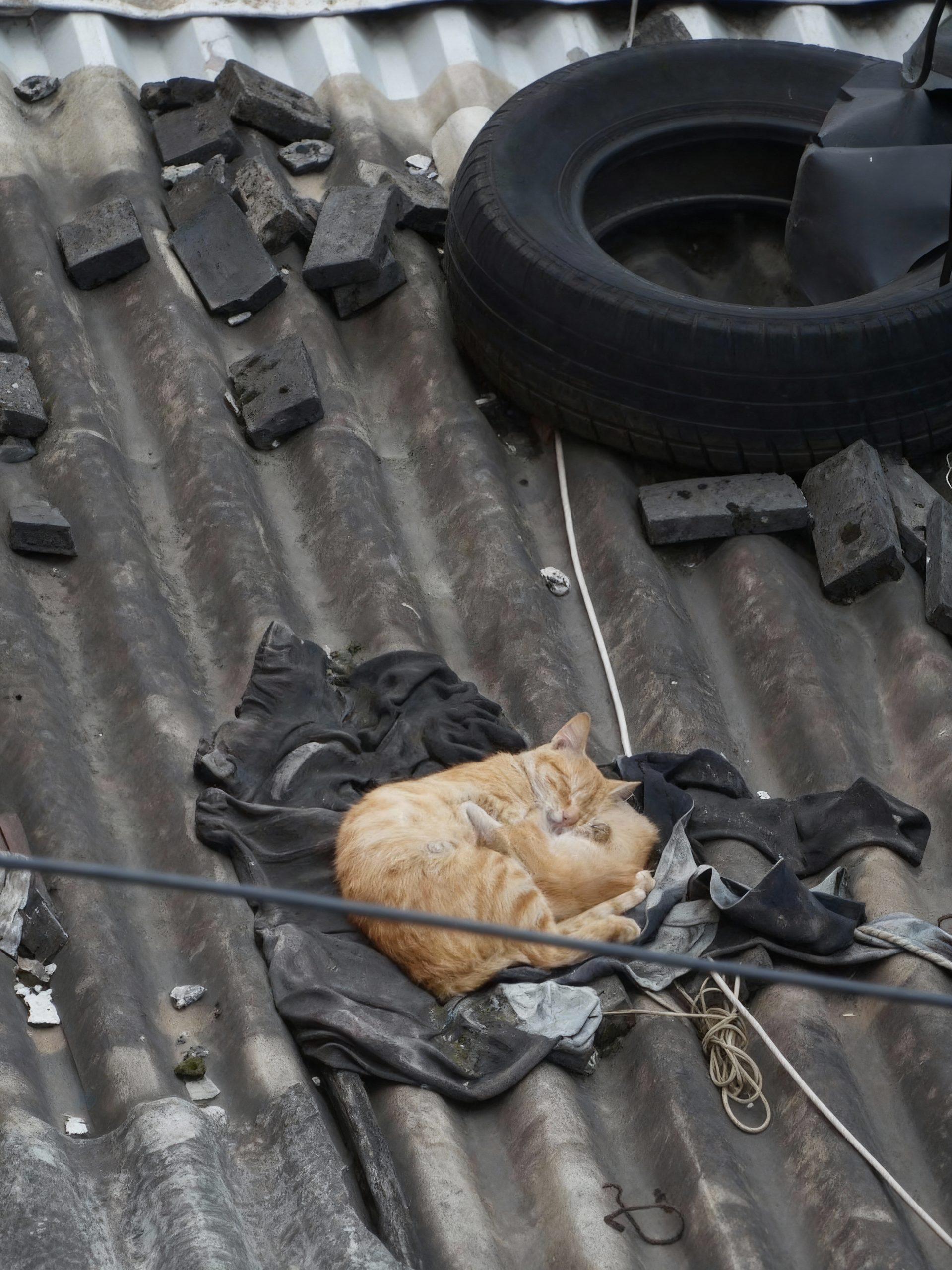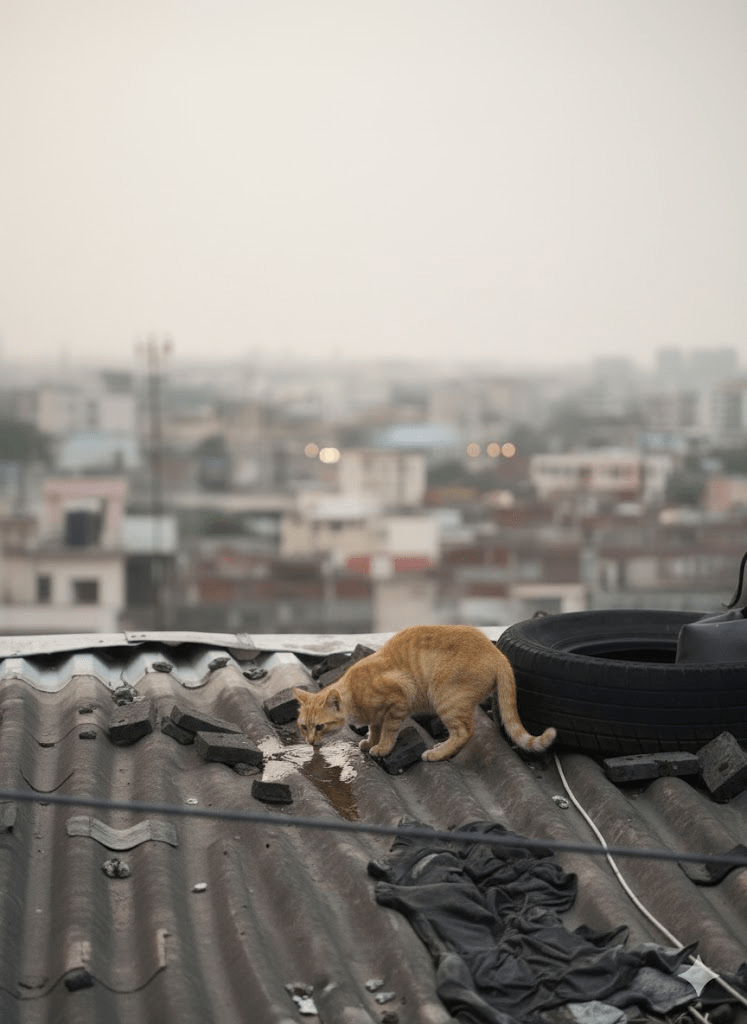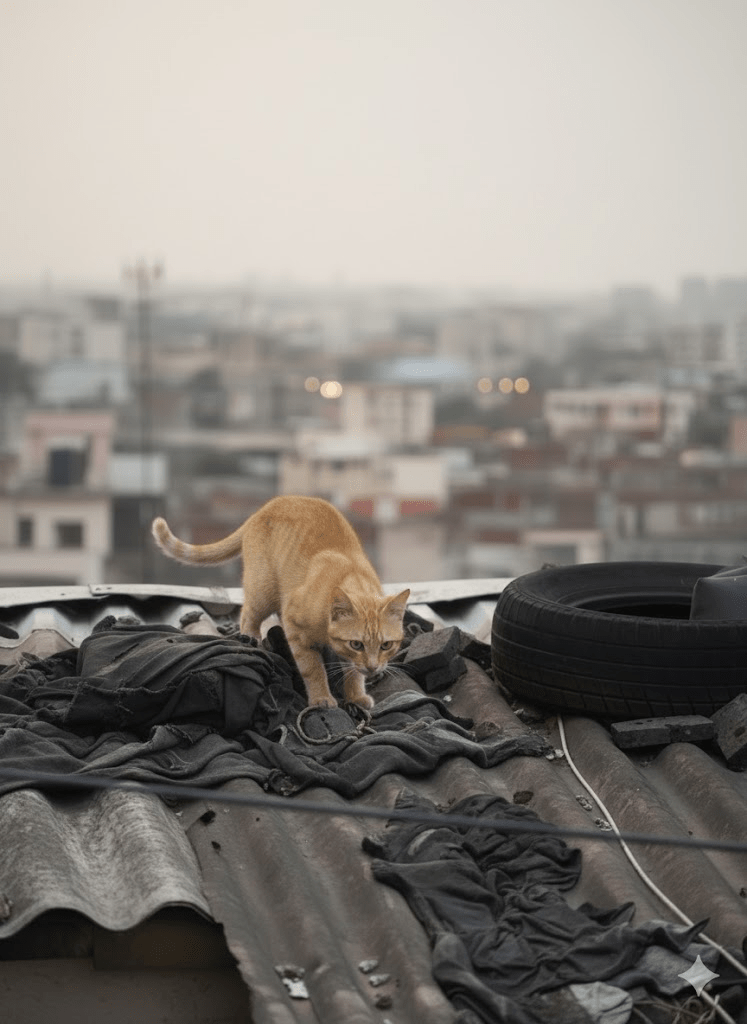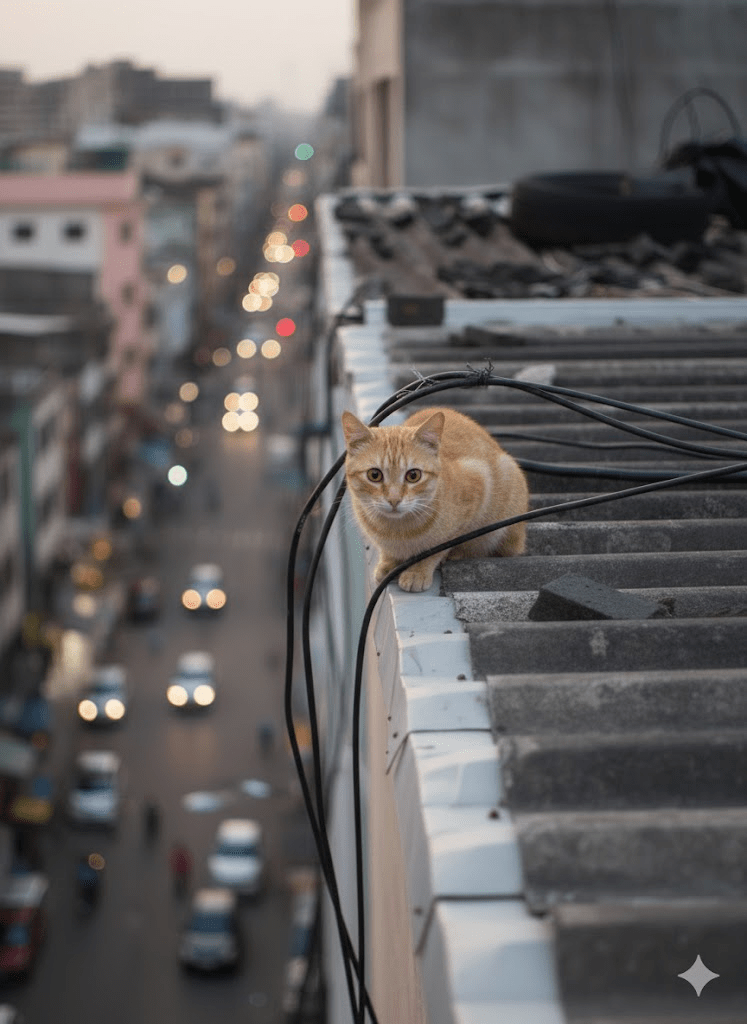In the heart of bustling urban landscapes, amidst the cacophony of city life and the relentless march of human activity, there exists a hidden world, a subculture of survival often overlooked by the hurried passerby. This world unfolds on the corrugated iron rooftops and forgotten ledges, where a surprising ecosystem thrives. Our particular focus today is on the domestic cat, Felis catus, an animal renowned for its adaptability, yet whose capacity for resilience truly shines in these elevated, often harsh environments. The image before us offers a poignant snapshot into this reality: an ginger cat, curled contentedly on a pile of dark fabric, atop a weathered corrugated roof, surrounded by debris that hints at neglect and the constant struggle against the elements. This isn’t a pampered house cat dozing in a sunbeam; this is a survivor, a testament to the enduring spirit of life finding a way, even in the most unpromising of circumstances. The tire, the loose bricks, the tangled wires—all speak to a narrative of resourcefulness, where discarded human artifacts become part of the feline habitat, offering shelter, warmth, or simply a vantage point. The very existence of this cat, seemingly at peace in its unconventional haven, prompts a deeper inquiry into the lives of urban rooftop dwellers and the unique challenges and adaptations that define their daily existence. We will delve into how these animals navigate their precarious perches, what their presence reveals about urban ecology, and how their quiet survival stories unfold, day after day, high above the streets we traverse.

Navigating the labyrinthine rooftops of a metropolis presents a unique set of challenges that significantly shape the behavior and physiology of these urban felines. Unlike their ground-dwelling counterparts, rooftop cats must contend with extreme thermal fluctuations. The corrugated iron, while offering a sturdy surface, can become scorching hot under the midday sun and chillingly cold during the night, acting as a direct radiator of ambient temperatures. This necessitates a strong adaptive capacity for thermoregulation. Our ginger protagonist, seen nestled in dark fabric, exemplifies a common strategy: utilizing discarded materials for insulation against both heat and cold. These fabric scraps, often overlooked by humans, become vital components of their makeshift shelters. Furthermore, access to fresh water, a fundamental requirement for survival, is severely limited at these heights. Cats often rely on rainwater collected in crevices, condensation, or dew, making their hydration a constant challenge, particularly during dry spells. This scarcity drives them to seek out any available moisture, adapting their hunting patterns to include prey with higher water content or even daring descents to street level for water sources, though these journeys are fraught with danger.

The elevated vantage point of the rooftops offers both advantages and disadvantages in terms of predator and prey dynamics. While significantly reducing the threat from ground-level predators like dogs or human interference, it exposes them to avian predators, such as larger birds of prey that might occasionally patrol urban skies. More importantly, the rooftop ecosystem profoundly alters their hunting strategies. Their primary food sources shift from typical ground-dwelling rodents to insects, smaller birds that nest on rooftops or ledges, and resourceful scavenging from human discards. The presence of loose bricks and discarded tires in the image suggests a landscape ripe for opportunistic hunting, as these items can harbor insects or provide cover for small rodents. These cats develop exceptional stealth and agility, utilizing every uneven surface and shadow for cover, transforming their hunting grounds into a complex, three-dimensional chess game. Their acute senses are heightened, constantly scanning the expansive urban horizon for both opportunity and threat, making them masters of their aerial domain.

Urban development and human activity, while inadvertently creating these elevated habitats, also present significant hazards for rooftop cats. The very structures that offer refuge can become sources of danger. Falling debris, unsecured materials, and exposed wiring, as hinted at by the tangled wires in the initial image, pose constant threats. Furthermore, the limited access to veterinary care means injuries often go untreated, and illnesses can spread rapidly within a small, isolated colony. Human-wildlife conflict, though less direct than at street level, can still manifest through intentional harm or the displacement of colonies during renovation projects. However, a fascinating aspect of their survival is their ability to co-exist, often unnoticed, alongside human populations. They become silent observers of our lives, finding niches in the periphery, thriving on the edges of our constructed world. Their presence on these rooftops highlights the complex interplay between urban expansion and wildlife adaptation, showcasing how nature, in its persistent way, reclaims spaces even in the most industrialized environments.







